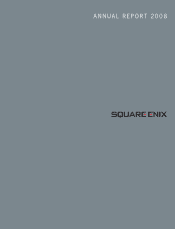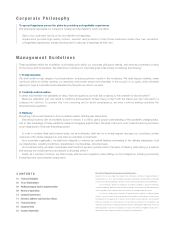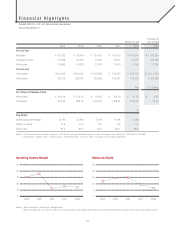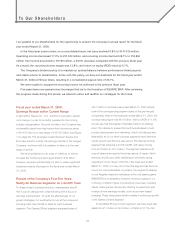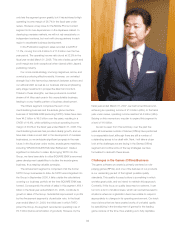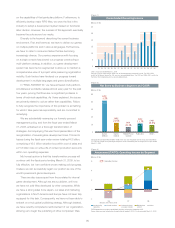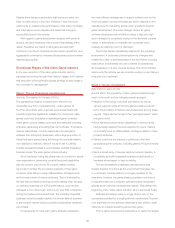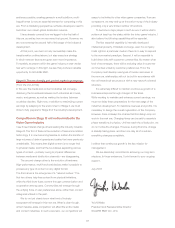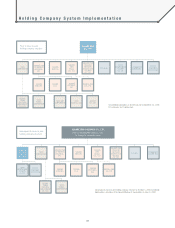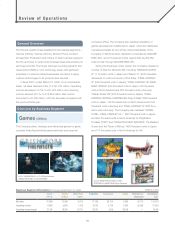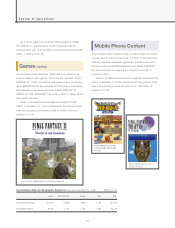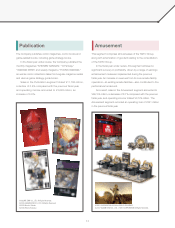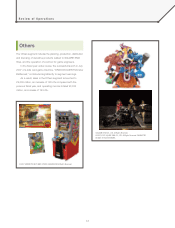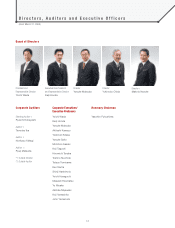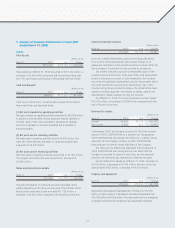Square Enix 2008 Annual Report Download - page 9
Download and view the complete annual report
Please find page 9 of the 2008 Square Enix annual report below. You can navigate through the pages in the report by either clicking on the pages listed below, or by using the keyword search tool below to find specific information within the annual report.
audience possible, creating games in a multi-platform, multi-
lingual format is now an essential element for competing in this
era. From a marketing perspective, software developers need to
build their own robust global distribution network.
I have already covered how we lagged in the first half of
this era, as well as how we recovered lost ground. However, we
are now entering the second half of this stage of the industry’s
development.
At this point, we must not only successfully make the
transformation outlined above, but also execute a strategy
in which network factors are given even more importance.
Fortunately, at present within the game industry a clear verdict
has yet to emerge. In this light, we see this juncture a valuable
opportunity for SQUARE ENIX.
Stage III: The era of media and content market convergence
(From the mid-2010s)
In this era, the media and content industries will converge,
dissolving the boundaries between such industries as movies,
music, and games, as well as making the borders between
countries obsolete. Right now, in addition to maximizing current
earnings by adapting to the environment of Stage II, we must
strive to fully prepare for Stage III of the industry’s development.
Competition in Stage III will not be limited to the
Video Game Industry
I see three material change drivers leading the industry towards
Stage III. The first of these is the evolution of telecommunication
technology. It is now becoming feasible to sustain the transfer of
large volumes of data at speeds and scales that were previously
unattainable. This means that digital content is no longer tied
to physical media, and that the boundaries separating various
types of content—primarily owing to physical differences
between media and distribution channels—are disappearing.
The second change driver is the evolution of hardware.
High-performance, multi-functional devices make it possible to
process any type of content on any digital format.
The third driver is the emergence of a “network culture.” The
first two drivers help free content from physical limitations,
while the third driver fuses content through communication and
cooperation among users. Communities will emerge through
the unifying force of user preferences alone, rather than content
categories utilized in the past.
We do not yet clearly know what kind of industry
ecosystem will emerge in this new era. What is clear though,
is that massive-scale competition will affect the entire media
and content industries. In such a scenario, our competitors will
cease to be limited to other video game companies. If we are
complacent, we may end up at the bottom rung of the industry
providing only a very limited number of functions.
To become a major player in such an era, it will be vital to
achieve at least top-five status within the video game industry. I
also believe the following capabilities will be essential.
The first essential capability is internally-developed
intellectual property. If markets converge, even if a company
holds rights in a particular medium there is no way to respond
to the new market paradigm. Second, it will be essential to
build direct links with customer communities. No matter what
kind of era emerges, there will be enduring value in customer
communities united by customer preferences. Third, the
Company must develop new types of human resources. In
the new era, relationships will not be built in accordance with
the old hierarchical structure but with a new network-oriented
structure.
It is extremely difficult to maintain continuous growth of a
business enterprise through changes of the times.
While working to maintain and enhance current earnings, we
must not delay these preparations for the next stage of the
industry’s development. To maximize revenues and profits, it is
necessary to design the overall organization of the Company.
However, there is always the chance that this design may not
work in the next era. Changing times can be said to resemble
phase transitions in physics. Until we reach the critical point, we
do not notice the changes. However, during this time, change
is steadily taking place, and then one day, all of a sudden,
everything changes completely.
I believe that continuous growth is the key mission for
management.
We are absolutely committed to achieving our long-term
missions. In these endeavors, I look forward to your ongoing
support.
July 2008
Yoichi Wada
President and Representative Director
SQUARE ENIX CO., LTD.
07

